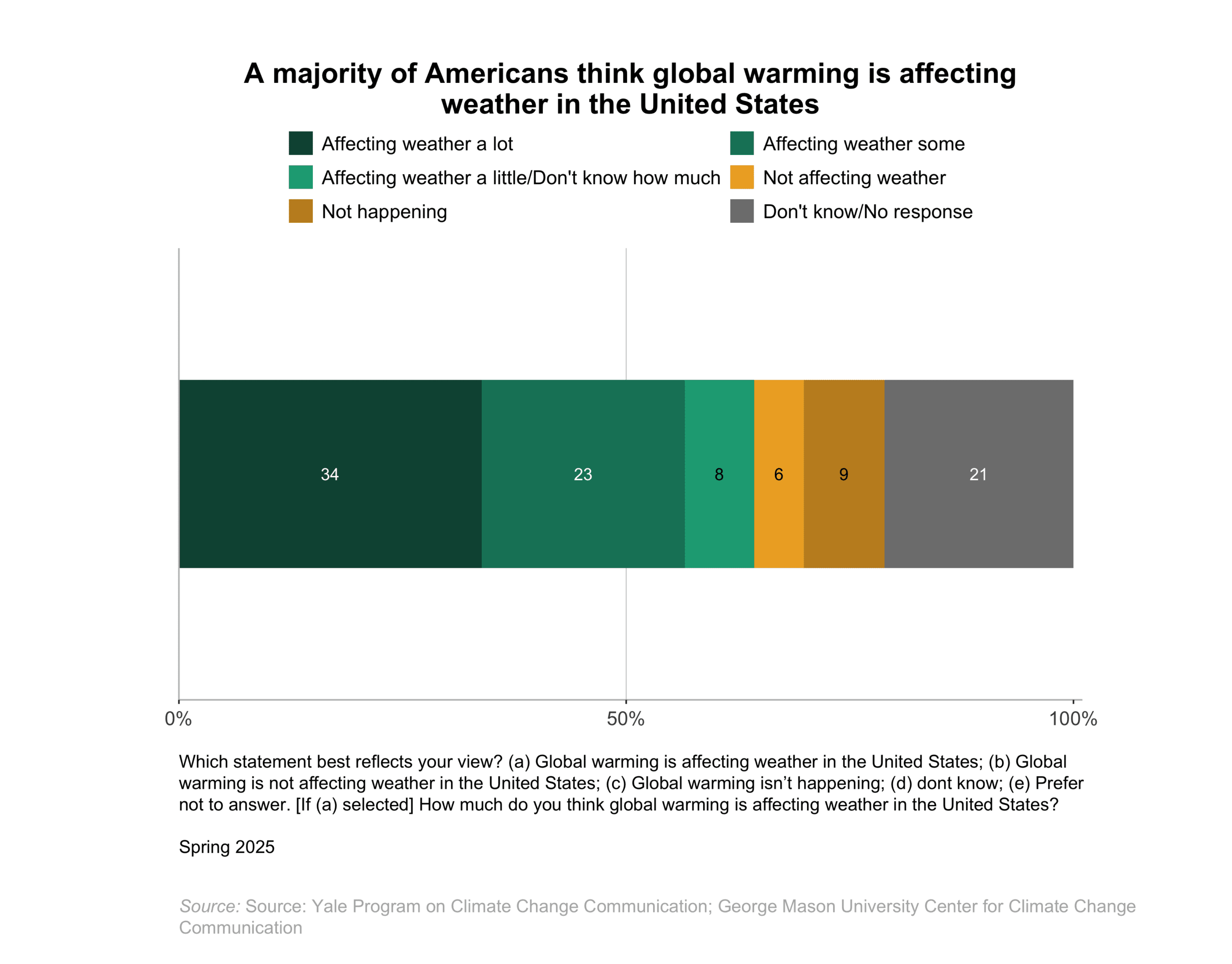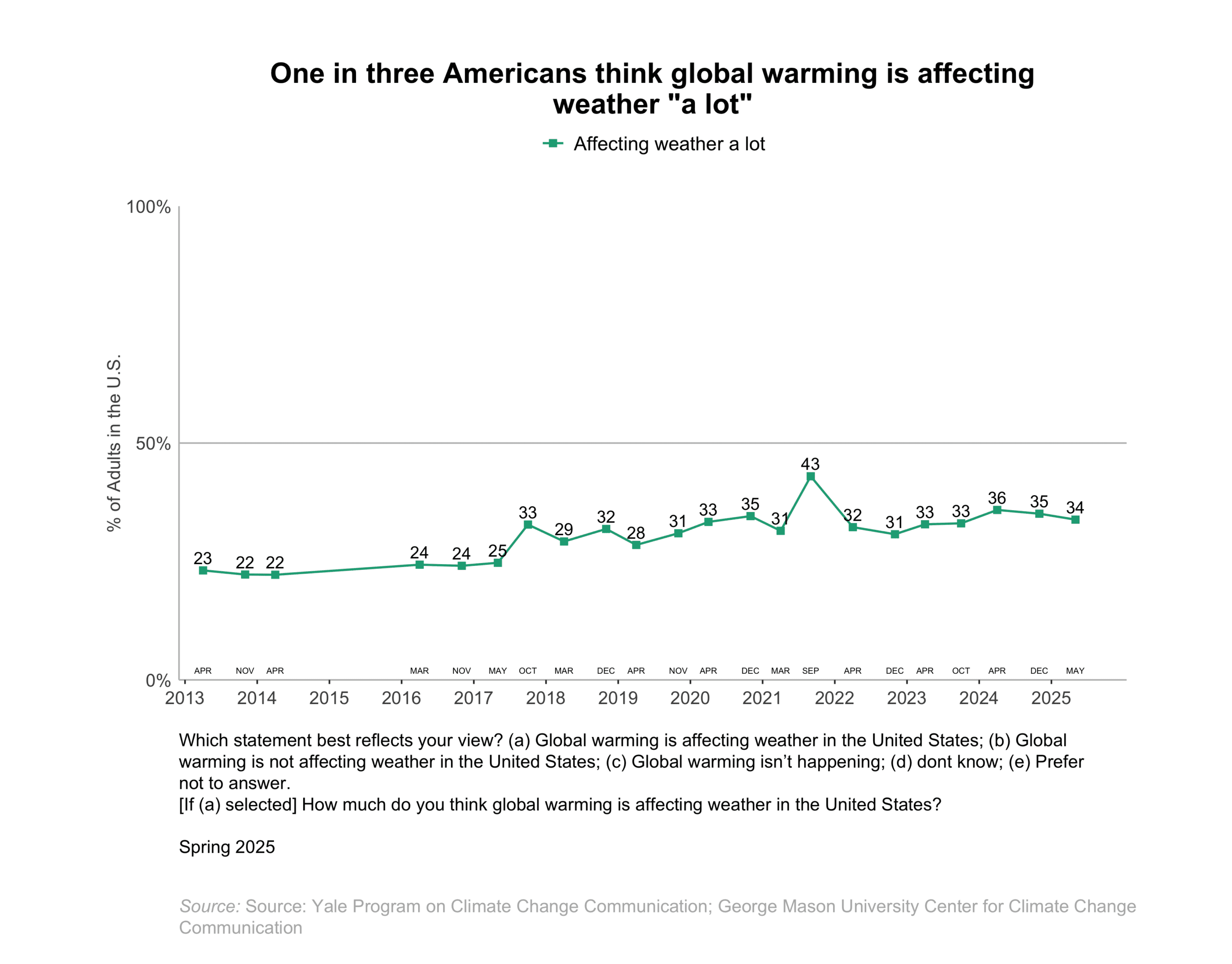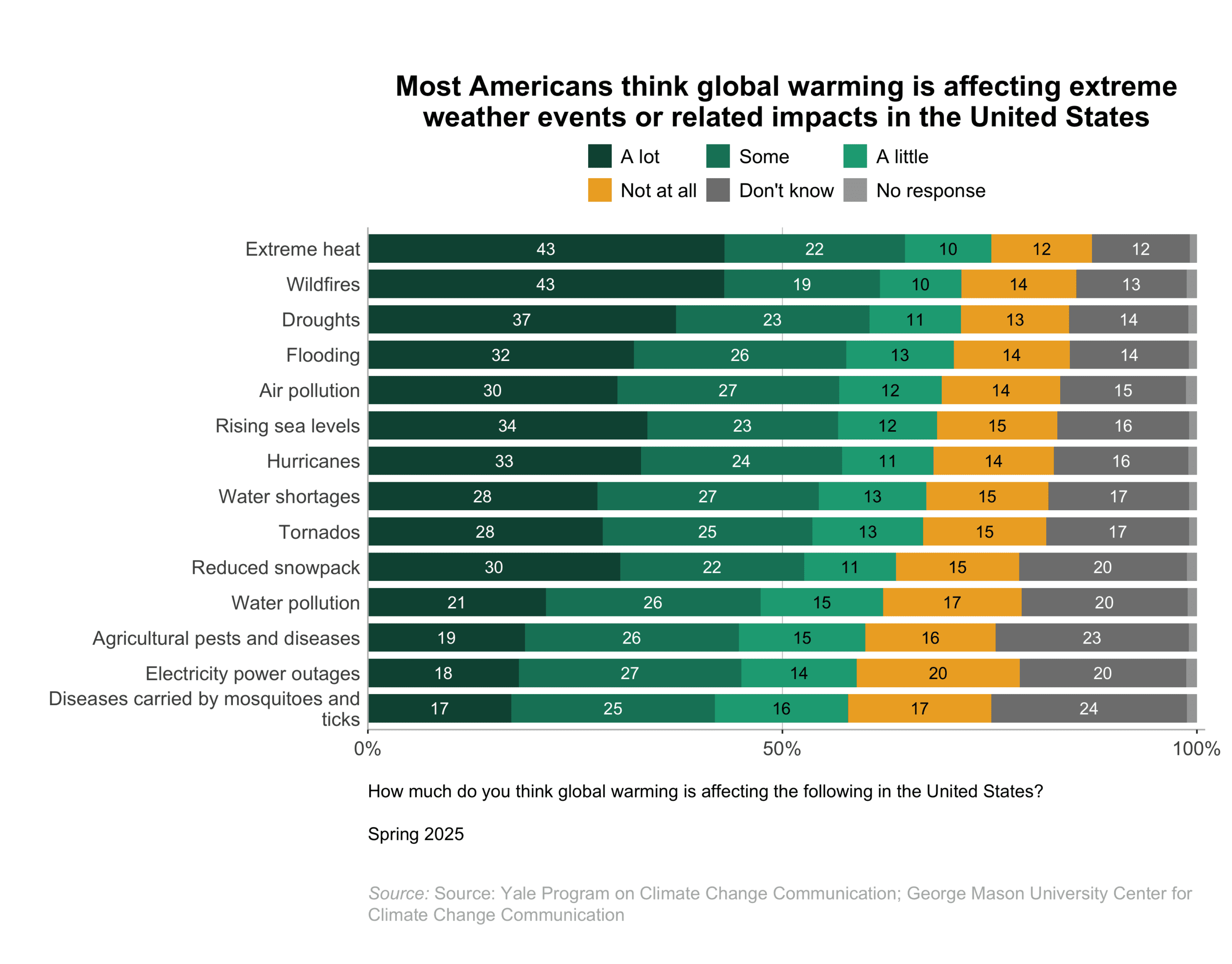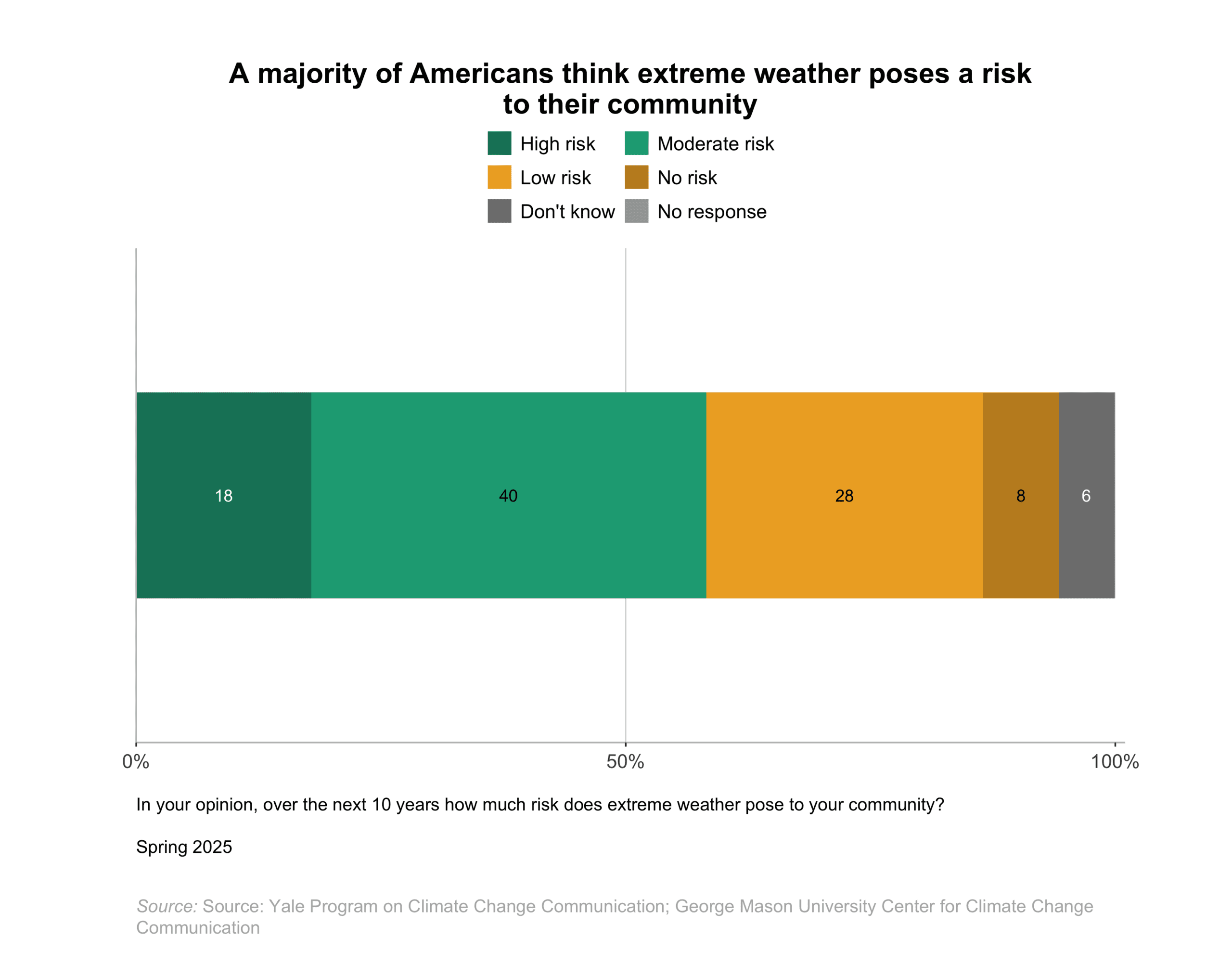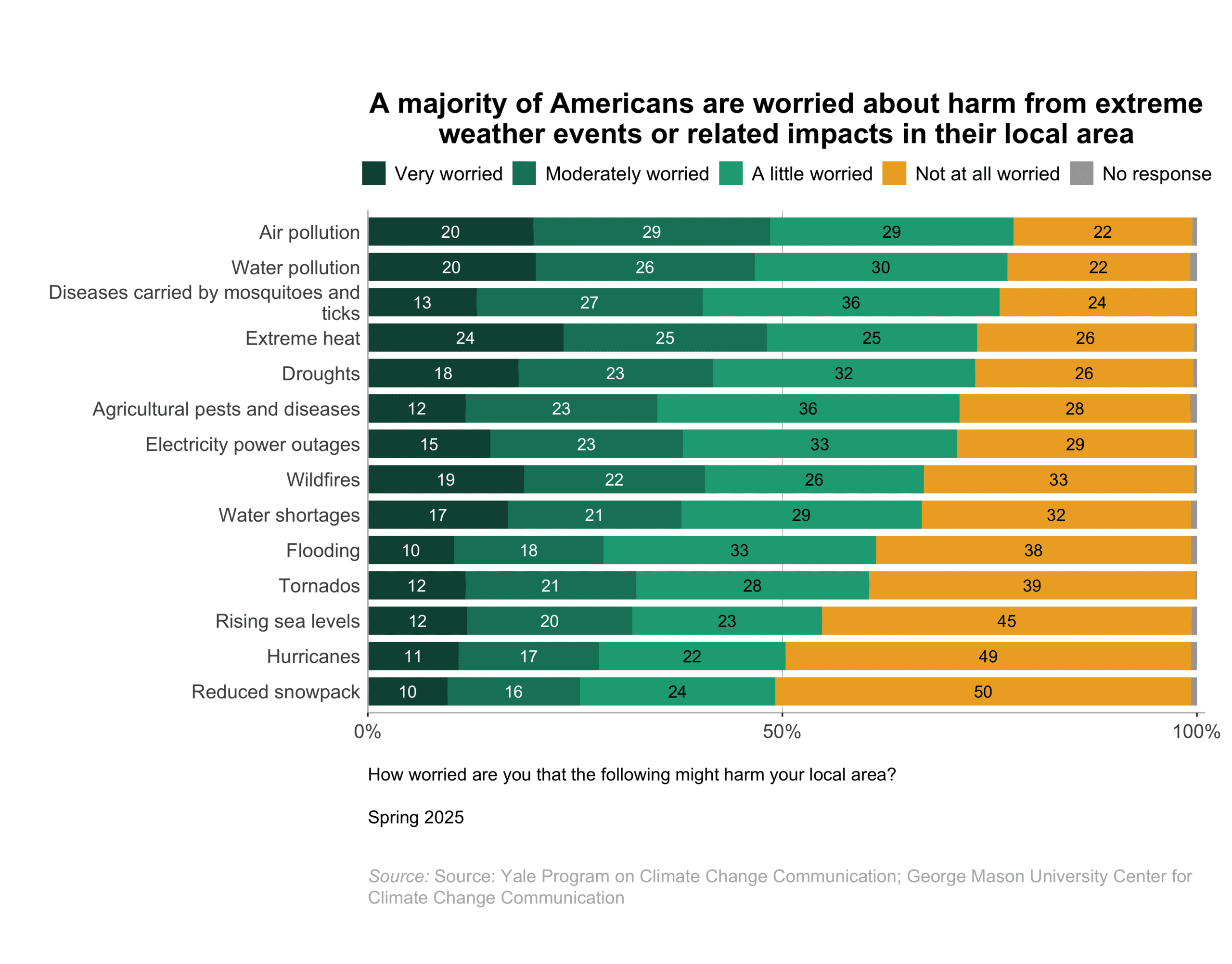Report · Jul 8, 2025
Climate Change in the American Mind: Beliefs & Attitudes, Spring 2025
By Anthony Leiserowitz, Edward Maibach, Seth Rosenthal, John Kotcher, Emily Goddard, Jennifer Carman, Marija Verner, Teresa Myers, Joshua Ettinger, Julia Fine, Emily Richards, Matthew Goldberg and Jennifer Marlon
Filed under: Beliefs & Attitudes, Behaviors & Actions and Climate Impacts
6. Impacts of Global Warming
6.1 A majority of Americans think global warming is affecting weather in the United States.
A majority of Americans (64%) think global warming is affecting weather in the United States, including many who think global warming is affecting U.S. weather either “a lot” (34%) or “some” (23%).
As noted above, about one-third of Americans (34%) think global warming is affecting weather “a lot.”
6.2 Most Americans think global warming is affecting extreme weather events or related impacts in the United States.
Most Americans think global warming is affecting many extreme weather events or related impacts in the United States at least “a little.” Seven in ten or more think global warming is affecting extreme heat (75%), wildfires (72%), droughts (72%), and flooding (71%). Six in ten or more think global warming is affecting air pollution (69%), rising sea levels (69%), hurricanes (68%), water shortages (67%), tornados (67%), reduced snowpack (64%), water pollution (62%), and agricultural pests and diseases (60%), and more than half think it is affecting electricity power outages (59%), and diseases carried by mosquitoes and ticks, such as Lyme disease and West Nile Virus (58%).
6.3 A majority of Americans think extreme weather poses a risk to their community.
A majority of Americans (58%) think extreme weather poses either a “high” (18%) or “moderate” (40%) risk to their community over the next 10 years. Fewer think extreme weather poses either a “low” risk (28%) or “no” risk (8%).
6.4 A majority of Americans are worried about harm from extreme weather events or related impacts in their local area.
As described in Section 6.2, many Americans think global warming already affects extreme weather events or related impacts in the United States. This section details how worried Americans are that each of these events or impacts will harm their local area in the future. Half or more Americans are at least “a little worried” their local area might be harmed by air pollution (78%), water pollution (77%), diseases carried by mosquitoes and ticks, such as Lyme disease and West Nile Virus (76%), extreme heat (73%), droughts (73%), agricultural pests and diseases (71%), electricity power outages (71%), wildfires (67%, 12 percentage points higher than when we last asked this question in Fall 2024), water shortages (67%), flooding (61%), tornados (60%), rising sea levels (55%, +13 percentage points), hurricanes (50%, +8 percentage points), and reduced snowpack (49%).
